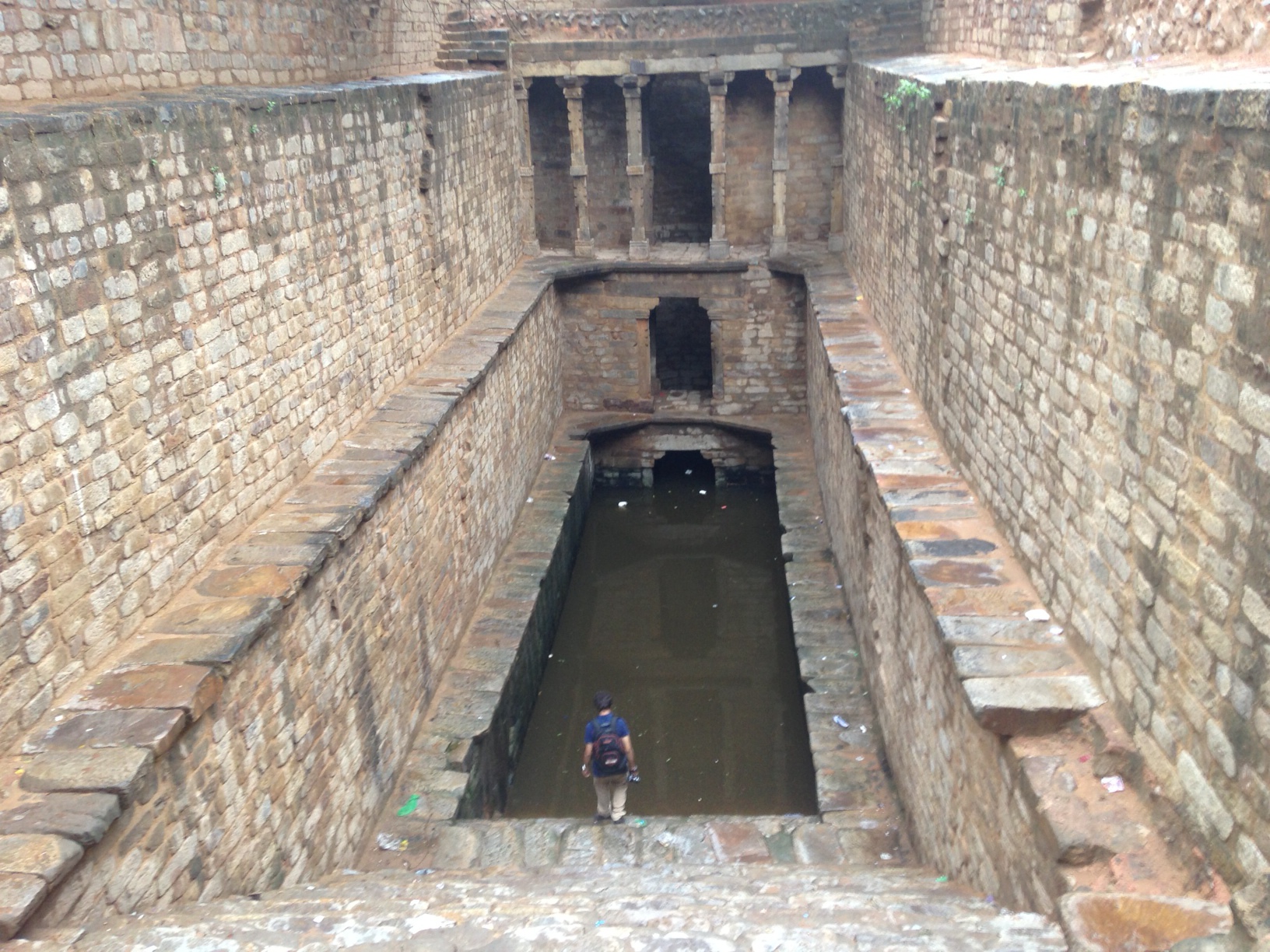“After visiting different parts of Delhi in the past 5 days, I felt for the first time that I really came to understand Delhi. From measuring the temperature of water in a baoli to eating parathas in Chandni Chowk we have seen many diverse segments of this city.” –Rohan Braganza
Over 6 days in June, a group of teenagers, 3 facilitators and 1 very confused bus driver travelled across Delhi to truly understand the city that they called home. From Chandni Chowk and Delhi’s unique Lal Dora villages to the city’s chaotic railway station, many areas of Delhi were uncovered and reflected on. Inspiring Delhi was an enlightening experience that not only introduced us to the intricacies of our urban environment but also pushed us to think of critical solutions for the challenges it faced.
The journey started at Mehrauli Village - one of the oldest inhabited areas of Delhi. Though full of monuments dating back to the 1200s, it has now become polluted and is strewn with litter. As the rain poured down on us, we waded from Adham Khans’s 16th century tomb to the 13th-19th century Sufi Dargah (the resting place for Qutb Sahib and many others). We even visited the Mehrauli Archaeological Park and were appalled by the lack of drainage around the area. The day ended at the EdBrand office where, as we dried up, we discussedwhat we’d discovered about our city in a place that was ancient - but still completely new to most of us.
The next day, we focused on the theme ‘city as an ecosystem’. We visited the New Delhi Railway Station to learn more about the NGO Chintan’s waste reclamation project.
“Instead of coming through the main gate, as the passengers do, we took a… rather interesting route to the station.” – Swaraj Rao
As we took the side route to the train, we saw lanes congested with garbage waste. After conversing with the Chintan and the Safai Sena workers that sort through this rubbish we learned that over 8000 plastic bottles are thrown away daily. The workers remove around 30% of this and help recycle the plastic. Their work is indispensable and critical to the functioning of the city. Along with this, we also learnt about Chintan’s various projects to support its underprivileged workers and empower them. By the end of the second day, we were left pondering questions like - What role does the poorest section of society play in our lives and what does our city do for them?
“The organisation (Chintan) provides the under privileged people with self respect and dignity, through providing them with green jobs.” – Avi Singhania
The next day it was time to dwell on the meaning of community and security. We started off by exploring the urban village, Khirkee extension and were immediately amazed by the picturesque street art on the building walls. We went on to tour KHOJ’s (a not for profit cultural organization for the promotion of the arts) office and then stopped at Sweccha – a social enterprise that works to ‘upcycle’ goods.
Mattia Lullini's amazing street art @ Khirkee Extension
“As soon as I walked into Swechha’s newly designed office in Khirkee extension, I was mesmerized. Almost every single thing from pillows to chandeliers had been made from waste products such as empty tetra packs, milk packets, waste cloth and even rubber tyres.” – Shantanu Puri
After being inspired by this organization’s fresh ideas, we found ourselves on the narrow lanes of Shahpur Jhat where we spoke to the designer Shruti Narayan. She told us about how for her, running a creative enterprise is more important than making a profit. As this day came to a close at a Bihari-fusion café, we had a thought-provoking discussion about gentrification in urban villages, the local culture of the lal doras (an area that does not follow the laws of the city) and discussed the factors that lead to growth of a community and it’s creative economy.
Day 4 was all about Old Delhi.
“Sitting in Old Delhi, just watching people walk around in their busy lives is an experience on itsown. This market is always buzzing. It never stops, be it the local butcher shop, or your favorite restaurant.”- Aaditya Mohapatra
From Red Fort to Jama Masjid to the initial location of St. Stephen’s college – we saw it all. To make our explorations a bit more exciting, we were paired up and given instructions for a scavenger hunt. By surveying random people, we gathered an extraordinary amount of information and learned a lot about the history of our city. After two hours of hard work, we went to the famous paranthe wali gully in Chandni Chowk and ate some amazing paranthas and drank lassi.
Unfortunately, the field trips soon came to an end. We spent the last two days discussing our own ideas about this ‘new’ city we had just discovered and how our perspectives had changed. Each of us focused on one part of the city that had interested us and drafted a plan to help this area grow or reach a particular aim. For example, after being influenced by Chintan’s recycling project Swaraj Roa wanted to find out why people weren’t recycling enough and how that could be changed. After intensive research, he came to the conclusion that people needed incentives to recycle. Rohan Braganza planned to help Green the Gap (http://greenthegap.com/), which is a fair trade eco-fashion arm of Swechha, by starting a club in school whose members would all ‘upcycle’ waste products and make new things. Shantanu Puri was inspired by Sweccha’s upcycling as well. He planned to help supply raw material to the organization by placing cardboard boxes at the bottom of his condominium to collect used tetra packs and milk packets. Going on a completely different tangent, Aaditya Mohapatra, who was charmed by Old Delhi, aimed to understand the booming market of Old Delhi and also discover the mysteries surrounding the ancient place. It is obvious that each participant was influenced in his own personal way. Sadly, after we completed our project outlines, the programme ended and after an enriching 6 days, we bade our goodbyes and left more knowledgeable, more curious, and obviously more inspired!






